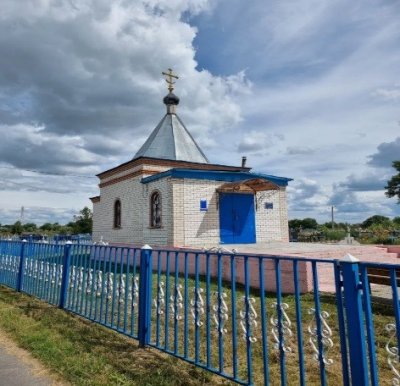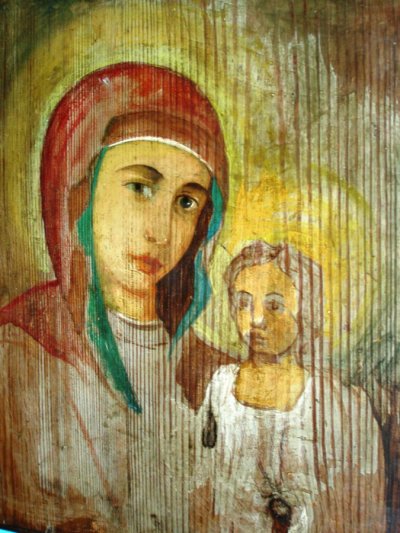If we talk about the Orthodox monuments of architecture, then the end of the 19th century. In the 20th century there were 4 churches and 2 chapels in the small town, one of which was built on the site of the ancient St. Boris-Gleb Temple near the supposed burial place of St. Cyril of Turov, revered as the guardian of Orthodoxy and the patron saint of Polesskaya and the whole land of Belarus. Now the Boriso-Gleb cemetery belongs to the village of Zapesochye by administrative division, and it is located on the site of the Boriso-Gleb monastery, which does not exist now. In 1996, a chapel was built and operates on the territory of the Boriso-Glebsky cemetery in honor of Boris and Gleb. Until recently, the chapel had an icon of the "Kazan Mother of G-d", which is being updated. For 5 years since 2001, nothing was visible on it, but in the fifth year, the faces of Jesus Christ and his mother gradually began to appear. To date, the icon has almost completely manifested itself, decorated with bright colors, and only some fragments of the icon have not yet acquired color and pattern. This renovation was witnessed by hundreds, maybe thousands, of people coming to Turov to worship shrines, who saw the icon in a different form with each subsequent visit. The story of the acquisition of this icon is very interesting in this regard. In the village of Yampol, Rechitsky district, one grandmother twice had a dream that she had not just a board under a barrel in her cellar, but an icon. In her dream, she was persistently informed that the icon needed to be found. After the second dream, in the presence of the son and the priest, the icon was found. The board really turned out to be an icon, but in terrible condition, only the outlines were discernible in places. It was decided to donate the icon to the Boriso-Gleb Chapel, where it began to be renovated." After certain events, approximately in July 24, the icon was moved to the Turov Cathedral of Saints Cyril and Lawrence of Turov. Also in the chapel of Saints Boris and Gleb there is a wooden painted cross of the 15th century, which was previously used for religious processions. This cross was previously located in the Church of the Holy Prophet Elijah on the eastern side of the Castle Hill, which was dismantled by the Soviet authorities until the 1940s. This cross was previously located in the Church of the Holy Prophet Elijah on the eastern side of the Castle Hill, which was dismantled by the Soviet authorities until the 1940s.

